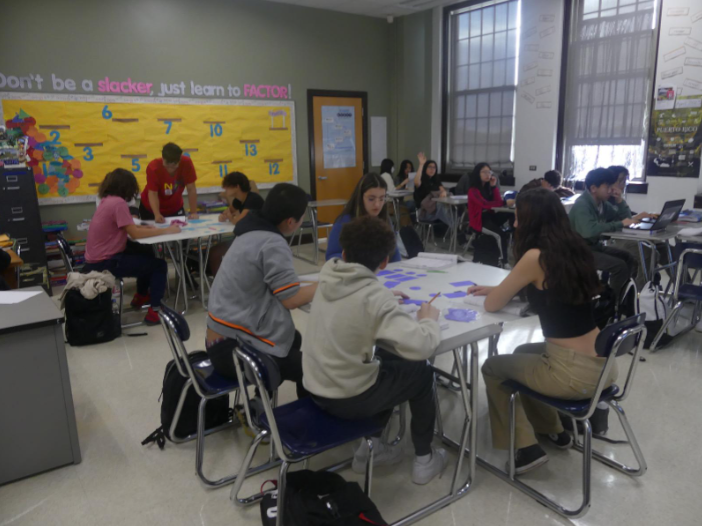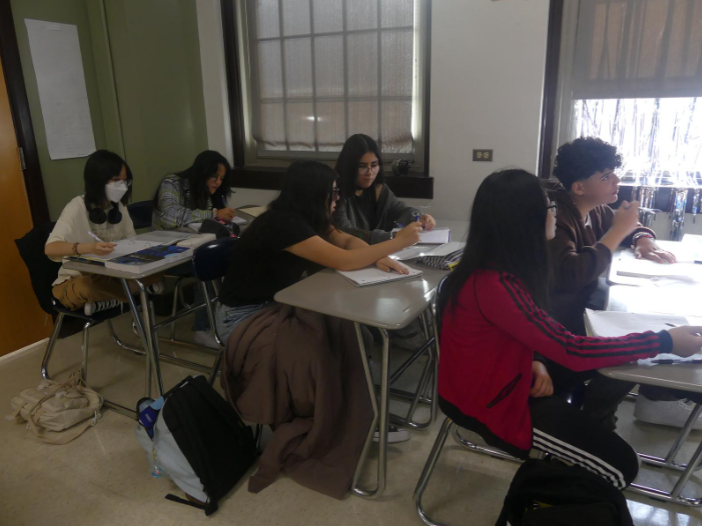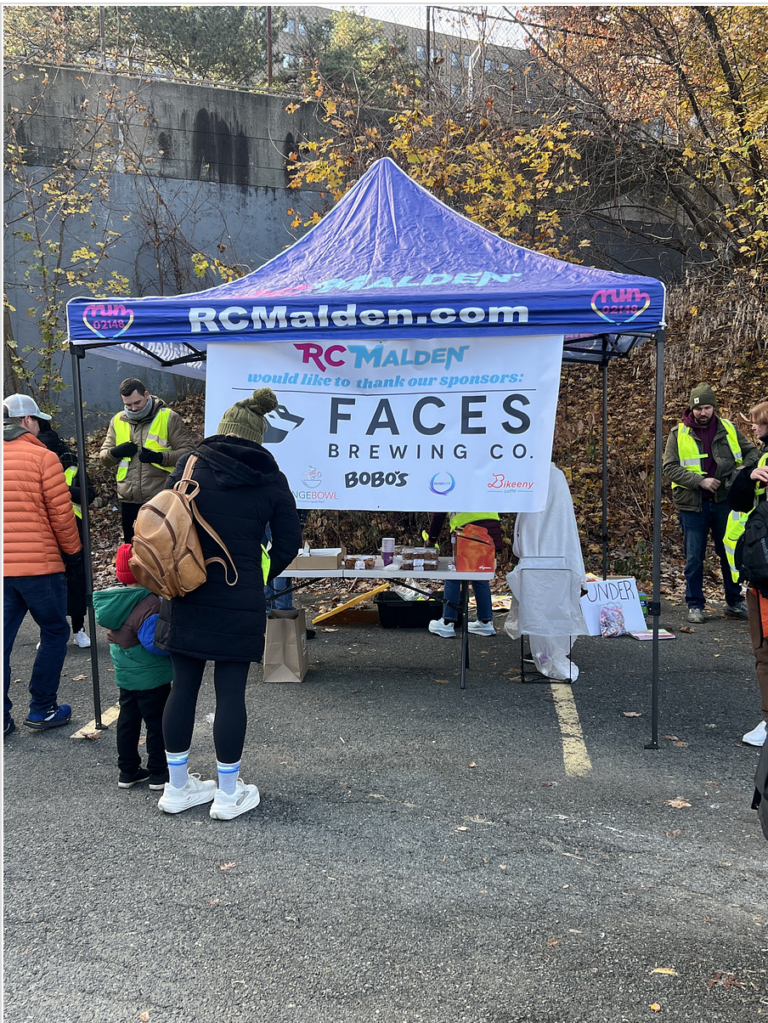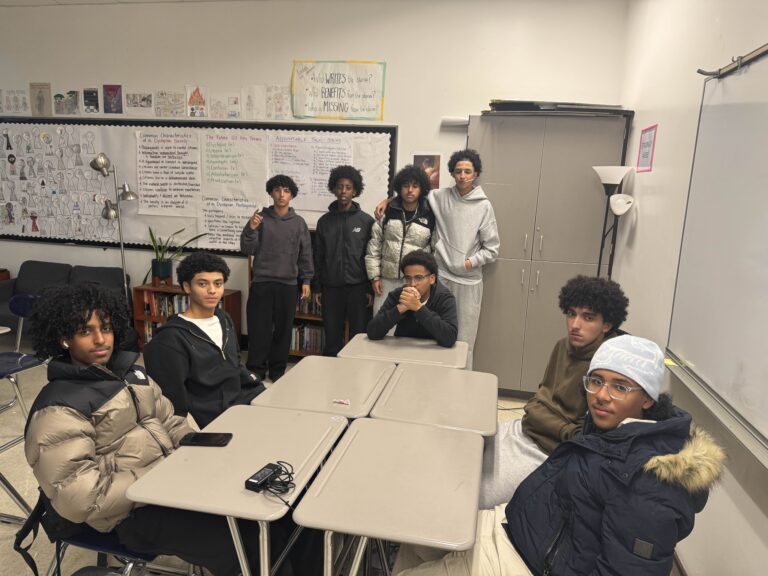
All photos taken by Delina Yohannes.
As Malden High School and its students were introduced to a brand new school year, the policies and rules for this year changed as well. Math teachers were first and foremost introduced to a new curriculum called Carnegie Learning. Evan Mauser, a long-time staff member here at MHS, stated that this new curriculum opened more doors for the department, including online math programs like “Desmos and DeltaMath” as well as “more options and resources for students.”
The math department considers itself as a safe, open learning environment. “I love working in this department; it’s a very collaborative environment,” said Christopher Giordano.
They have considered all of the new changes and realized the severity of the student body’s needs. Kayla Scheitlin, the head of the math department, stated that, “we’re trying to be more aware and thoughtful about students and their needs inside and outside of the classroom.”

As most of us already know and have possibly already experienced, the global pandemic had an immense impact on students whether it impacted them personally or educationally. The long period of isolation that brought major changes to the schooling system such as virtual learning altered the way students excel in the classroom.
When students returned back to in-person learning, it was obvious that the quarantine had brought upon many challenges with anxiety and other mental health-related issues.
“We’re definitely trying to be more cognizant about where students are mentally and emotionally,” said Scheitlin. The math department’s ambition to help and build a supportive community for all the students is something that has caught the eye of many.
Murphy Page is a new addition to the math department this year. Prior to their time at MHS, Page worked as a math teacher at both Peabody High School and an alternative school in Revere. However, unlike their previous jobs, Page felt an instant connection with the school and “was welcomed in.”

Having connections with the director of guidance, who loved the district, Page had a good idea of the district from the beginning. Similar to the responses of other teachers working in the math department, Page describes it as an environment where “teachers are very interested in collaborating with each other and showing the creative side of math.”
Integrated math is something that is rare to many school districts but the Malden district is not one of them. Compared to Page’s previous jobs, students had the typical setup of Algebra 1, Geometry, Algebra 2, etc. Page finds interest in “creative math” which includes a lot of experimenting with curriculum and doing things that aren’t considered “typical.” Integrated math is one of those experimental forms of educating students. They said, “Integrated math is a better approach in general. Keep things fresh in mind and enforce the connections between different things in math.”
Mauser agrees with Page and implies that there had been “more visual learning throughout most math classes in general” which made for a more creative environment for students.
The teachers of the math department have worked hard to keep the department active and engaging. Giordano feels that as a teacher, it is interesting to “learn from their [students’] experiences as well.” Mauser emphasizes that the teachers here are “the true soldiers.”




Different students studying math, and doing interactive work.




